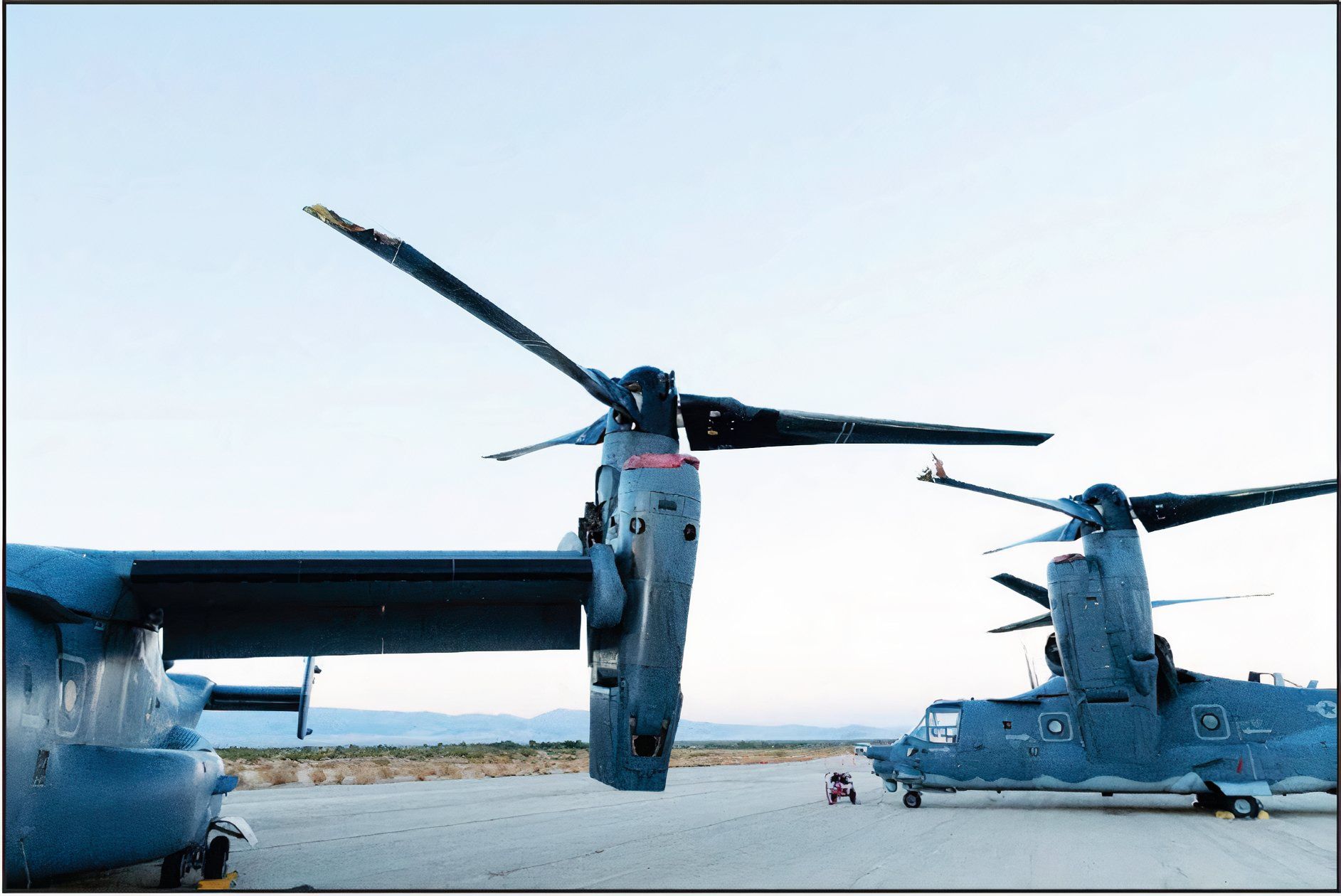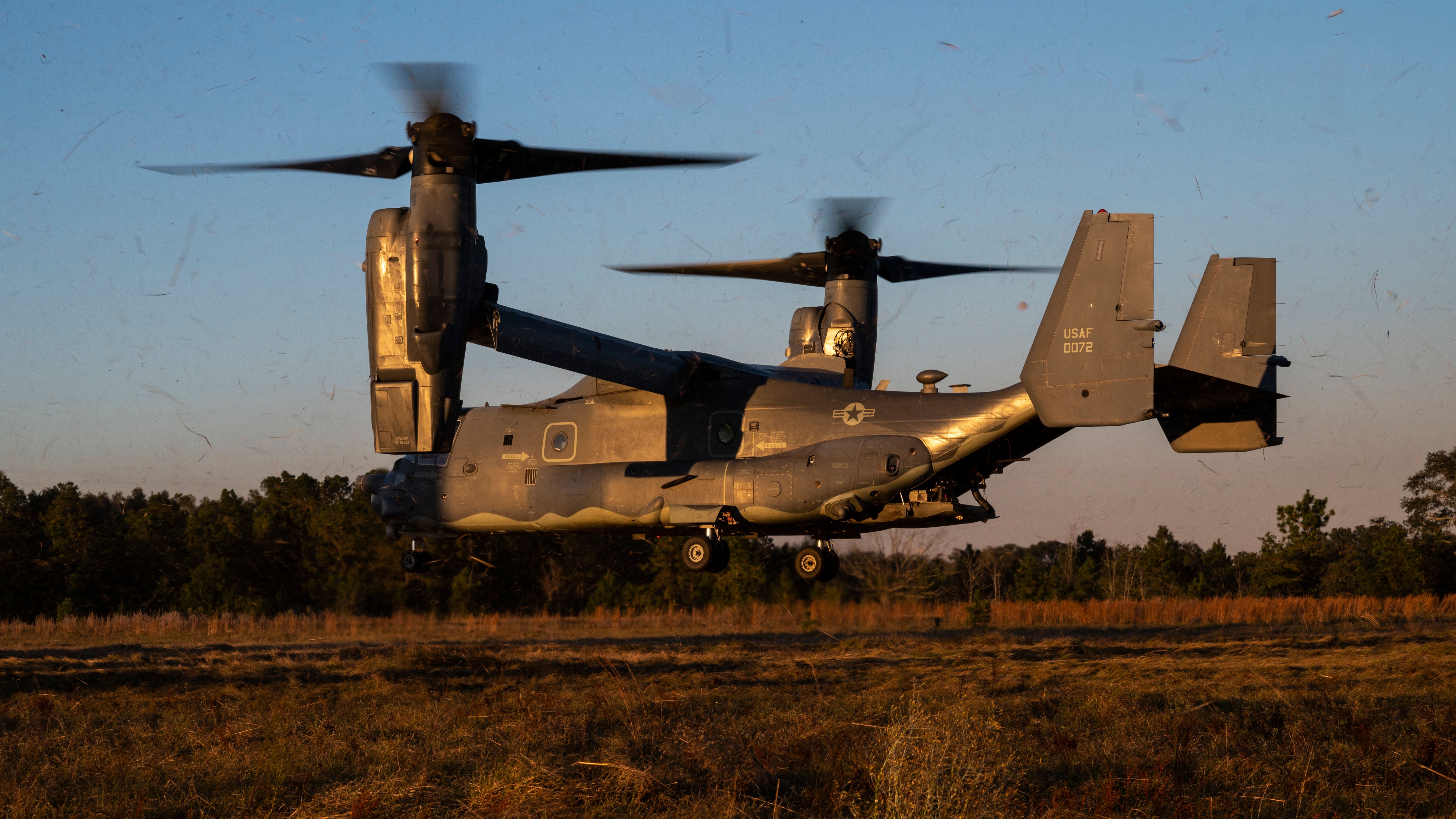Summary
- Complacency & fatigue resulted in damaged proprotors and underbelly of two CV-22 Ospreys
- Accidents due to lack of caution & proper procedures
- Both incidents cost over $2,000,000 and were preventable
The
US Air Force’s
’s 20th Special Operations Squadron has encountered issues operating their CV-22 Ospreys. On August 17 and August 22, 2023, the squadron had two serious mishaps with its Ospreys, but the issues were not the serious
V-22 Osprey
issues documented before.
Complacency and fatigue contribute to damaged proprotors
According to an August 29 Air & Space Forces magazine report and an aircraft accident investigation board report, the proprotors of two CV-22Bs touched while one CV-22 was parking after a functional check flight daylight mission concluded at Inyokern Airfield in California.
A “premature turn” to park led to the taxiing CV-22’s rotors hitting a stationary CV-22, causing $2,508,148 in damage and one maintainer injured sufficiently to require hospitalization. Below are two photos from the report:
The report also found the mission pilot lead had “broken sleep the night before the incident,” resulting in “increasing fatigue.” The mission commander (MC) had 139.9 hours of CV-22B flight time and “1,433.5 hours of other U.S. Military flight time primarily in the United States Marine Corps MV-22”. One can review the different variants of V-22:
In a statement of opinion, the accident investigation board President shared the following views:
“I find there were two causes for the mishap. First, the MC failed to ensure adequate taxi clearance during ground operations, resulting in the collision with a parked aircraft. Second, the MP demonstrated inadequate real-time risk assessment in identifying the closing proximity with the parked aircraft and a subsequent failure to take corrective action to avoid the collision.”
Later in the opinion, the investigator criticized the MC for not verbalizing their concerns about the risk. Additionally, loss of visual contact with the ground crew helped lead to the proprotors hitting. The investigator also found that complacency, “lack of standard terminology and signals during ground operations” with ground crew, and “inadequate command oversight” contributed to the mishap. This complacency manifested itself in a lack of risk mitigation, like foreseeing difficulty in parking at Inyokern Airfield.
Another CV-22 incident due to a lack of caution
In a separate accident investigation report also covered by the same Air & Space Forces Magazine report, the primary flight engineer on a CV-22 on August 22 had the battery cable to their night vision goggles engage the engine control levers. The sortie was to train on inserting Joint Terminal Air Controllers, who designate targets for pilots, and also some aerial gunnery training with the CV-22’s gun.
The flight engineer moved about the cockpit after the aerial gunnery training was completed before returning to Cannon Air Force Base. The aircrew did not protect the cockpit switches from the flight engineer’s night vision battery pack wire… as the CV-22 was at 190 feet above ground level and 20 knots ground speed, the flight engineer’s battery cable got ensnared on the CV-22’s right engine control lever to shut the engine off. Below are two images illustrating the risks:
As 73% of the total power was needed for a hover and 53% was possibly available with one engine off, the CV-22 headed to the ground. The impact speed was reduced from a potential 1,500 feet per minute to approximately 800 feet per minute while the flight engineer said nothing. The impact was at 40 knots ground speed, leading to only 2.6Gs or 2.6 times the force of gravity on the first impact of two. Only then were efforts made to restart the right engine, but a second impact was made at 4Gs. There was structural damage along the CV-22’s belly, and the forward-looking infrared (FLIR) turret was ripped away. Additionally, the flight engineer did hit his head on the center display unit and was taken for overnight medical evaluation.
Overall, the president of this accident investigation board found that the flight engineer’s night vision goggles cable cutting off the right engine prevented the Osprey from resume controlled flight so low. Additionally, “Inattention of the aircrew during a critical phase of flight,” plus the lack of proper procedures to protect the engine control levers (ECLs) from unintended touching during flight, led to this incident.
V-22 is statistically safe, but…
Both incidents—while costing the American taxpayer over $2 million to repair a piece and requiring hospital visits for two enlisted US Air Force personnel—were due to inattentiveness and a lack of proper procedures in using a relatively new form of transport. Neither incident is due to the documented issues around the V-22 Osprey.
Read more of our
V-22 Osprey
coverage
As to aircraft safety statistics – also reviewed by Simple Flying, in a Defense One op-ed written by US Marine Corps retired General Steve Busby,
“In the 17 years since the aircraft was first introduced into operational service in 2007, there have been 14 loss-of-aircraft mishaps across all three services and one international partner that operate the aircraft—or .82 mishaps per year while flying over 500,000 flight hours.”
Busby then mentioned that the H-60 Blackhawk had 390 incidents, causing 970 deaths, with 60 in the past decade. This translates to two more deaths in ten years of H-60 flight than in thirty years of V-22 flight.
Bottom line
But the last word goes to Amber Sax, engaged in litigation as the widow of an Osprey pilot who attempted to recover from a hard clutch engagement. Sax spoke to KCRA 3 about her experience after a briefing on an accident investigation.
“We all walked out of that room with a sense of feeling grateful that we now knew, but saying, ‘What are they doing to prevent this? Why wasn’t more done?”
One can only hope the US Air Force and other Osprey operators will govern themselves accordingly. Ensuring proper procedures for safe V-22 operations is the least that can be done.


